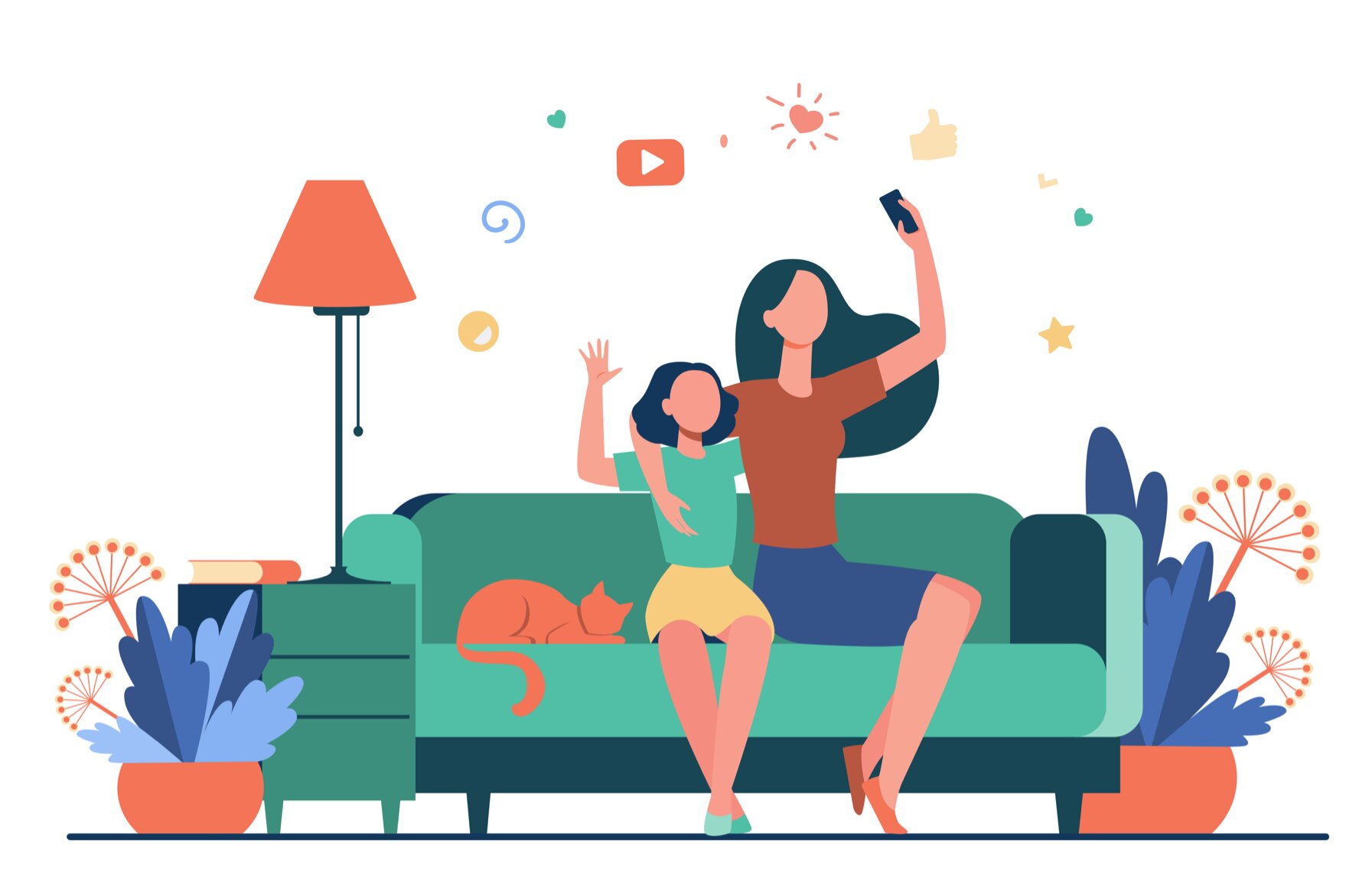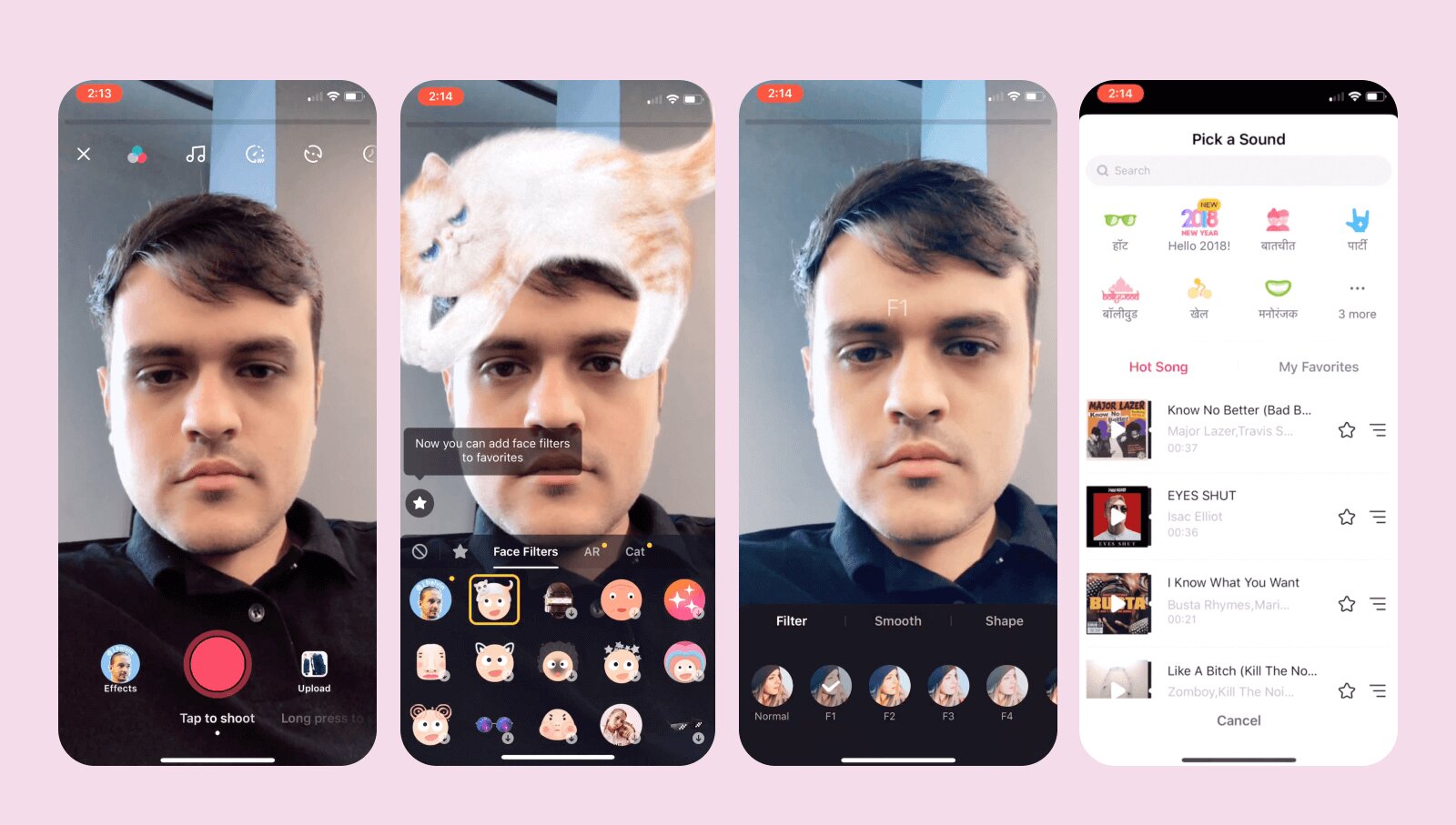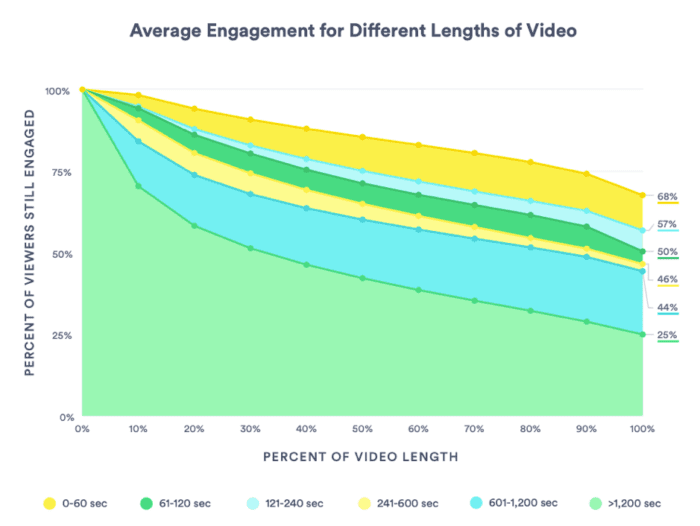Short stories or poems have always shown huge successes, as have long epics with 1000s of pages. Likewise, short catchy pop songs have easily achieved worldwide success, while long, jazz compositions can entertain audiences for hours too. All content - short & long can help your brand, business or social media grow when implemented properly with care and consideration.
Social Media Content Marketing specifically has quickly transitioned towards moving, video & animated content dominating over still images. The fast rise in GIFs during the 90s and 2000s showed that people love movement, but finding the right length for your videos or the right amount of motion to create is often a challenge. Here are 5 easy ways to ensure your video content captures attention, holds it and has your audience asking for more and sharing it!
1. Short and long form content both have their uses
The trends over the past two decades have shown that social media platforms have always tried to keep content quick and easy to navigate through, while also attempting to hold audiences on for as long as possible. Balancing the length of your content - video/motion in particular, can be a tricky affair - especially when brands and businesses invest large budgets for producing high quality TVCs, movies or episodic, serial content. This can however make planning a successful and efficient content strategy difficult. The best advice is to always aim to produce BOTH short and long form content (and medium length content given the right platform).
It is always best to start with creating the longest form content possible, and slowly cutting and splicing it down into different formats to appeal to different audiences, situations and their technologies.
2. Let your platform channels guide your creative direction
During the rise of social media networks and the changes they have made to content has given us useful insights into what lengths of video achieve the best success under the right conditions. The main point to remember is that your audience wants to see A LOT of content, whether short clips or long videos.
The rampant implementation by nearly all platforms of “stories” have shown that beyond still images and long videos, users enjoy browsing quick clips...
...as these can be consumed quickly and efficiently (much like the average length of TVCs stabilizing around the 15 second mark). Since the rise of SnapChat, Story content can now be seen across most platforms - from Instagram, Facebook, Whatsapp, TikTok, YouTube, and more recently Twitter’s introduction of Fleets and even LinkedIn’s odd adoption of Stories.

The changes to these platforms over the years has given us useful insights. For instance:
• Instagram Stories are between 7-15 seconds, while Tik-Tok settled on 15 second long content. The recent introduction of Twitter Fleets decided on the golden length of 6 seconds.
• On the other end of the spectrum, Instagram Videos initially kept content to 1 minute, while YouTube monetization rewarded content that was 10 minutes and above. Netflix has also shown audiences that both limited series of hour episodes, or short 20-30 minute episodes are both as popular as full-length feature films.
• What we can take away from these numbers that large amounts of data have influenced is that your short-video content wants to be as quick as 6-15 seconds; medium content should ideally be around the 1-3 minute mark, and anything longer, you will want to be at least 10 - 30 minutes (so long as the content is well produced).
3. The more, the better - but most importantly, frequency is key
Any creator who has put time and effort into producing great content will often start to feel underwhelmed as their content slowly starts to gain less views and interaction over time. Although it can be disheartening, it is also quite common as audiences in the digital age of video content are surrounded by new and captivating content every day.
Once you produce a great content formula that your audiences receive well and enjoy - the next step is to produce enough for them to follow you regularly. Posting long or short form videos always do better when you can release them episodically - i.e. once a day or two for shorter pieces of content - or weekly for long-form content. Ideally you would want your hero long-form content to be released every week or month, while your shorter clips are used as previews, trailers or sneak-peaks to keep your viewers following and waiting keenly for your next release.
The last benefit of releasing both short and long form video content with a consistent frequency is that the majority of the social media network algorithms will reward you with more reach. This is because your current viewers have already shown an interest in your content and the platforms will recognize this, and suggest more to them, if there is more.
4. Produce content quickly & efficiently - but keep it captivating and easy to consume
Making long-form content does not require a full production team (although that is always useful if you have access to it!). And likewise, your short clips and stories can be produced with smartphones in minutes. Long approval processes or intricate editing can often drag the process and delay releases - however planning workflows ahead of time and creating content efficiently with the tools you already have will allow you to always have great content to release.
Mastering the art of great photography, filming, editing and motion graphics is fundamental for making content that is easy and enjoyable to watch for audiences - and taking time to learn and master your techniques and software will alway benefit your final product. But it is also useful to bear in mind that the majority of Social Media Networks have included their own suite of capturing, editing and compositing features to make the process easy, quick and well-polished too.

It is important, however, to also work towards creating a strong brand-identity and to not go too crazy with all the options within these quick-and-easy to make video platforms. It is important to be experimental - but always stay true to your brand’s core identity - such as including brand colours, fonts, logos or hashtags, so that your audience can easily recognize your content amongst the sea of other clips out there.
5. Monitor & optimize your audience retention
Lastly, always let your data guide your content strategy and plans going forward. The key to video content is always the Audience Retention statistics. This usually shows if your audiences are dropping off at a specific point. Monitoring this closely can help you find areas of your videos that aren’t necessarily appealing to the audience you are creating for.
General statistical knowledge will also usually point to the longer your content being, the more at risk of having the audience lose interest and retention. This doesn't necessarily mean your content isn’t great - but with longer pieces of content, the opportunity for distractions is greater and there are more reasons why someone could become disengaged.
Looking at the data below, it is possible to see that whether short or long - your video content will always slowly lose retention over video-length time. While this slow drop-off is almost unavoidable, clever tricks can be used to keep audiences interested till the end. Perhaps it would be as simple as looking at your data and finding specific points where retention dips and planning to have some fresh and fun things planned for those points in video-time. This could be a competition that encourages users to wait till the end - or a change in editing or plot.

Even with general retention drop-offs, it is also good to monitor all your stats and test your different types of short and long form content to see what your specific audience is most receptive to.
To end - there is no easy way to balance the always tricky question of what the right length video content should be. With so many great tools at our disposal to make great video content of all types of lengths, it is useful to produce more, release more (on the correct channels) and to engage back with your audience (especially with your data) to find out what will work best for your brand or purpose.
We’ve put together a short example below to show how using the same simple pieces of content, we can edit and tweak them to appeal to different lengths - all of which can be used to their best potential when placed on the right channels at the right time.
